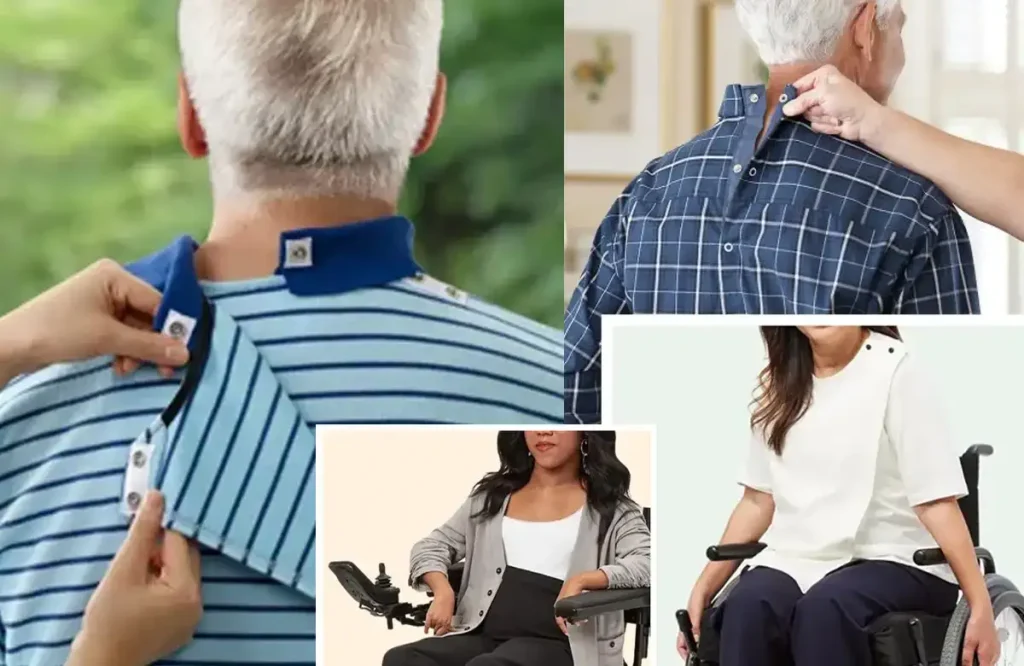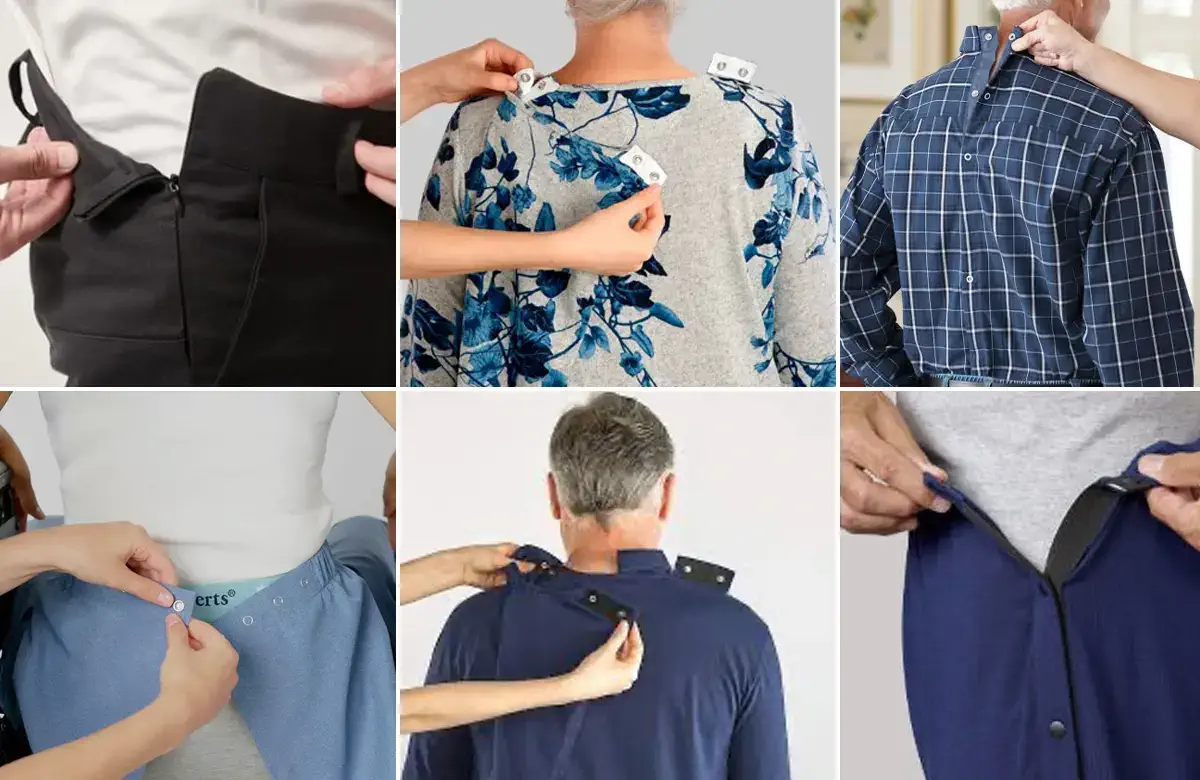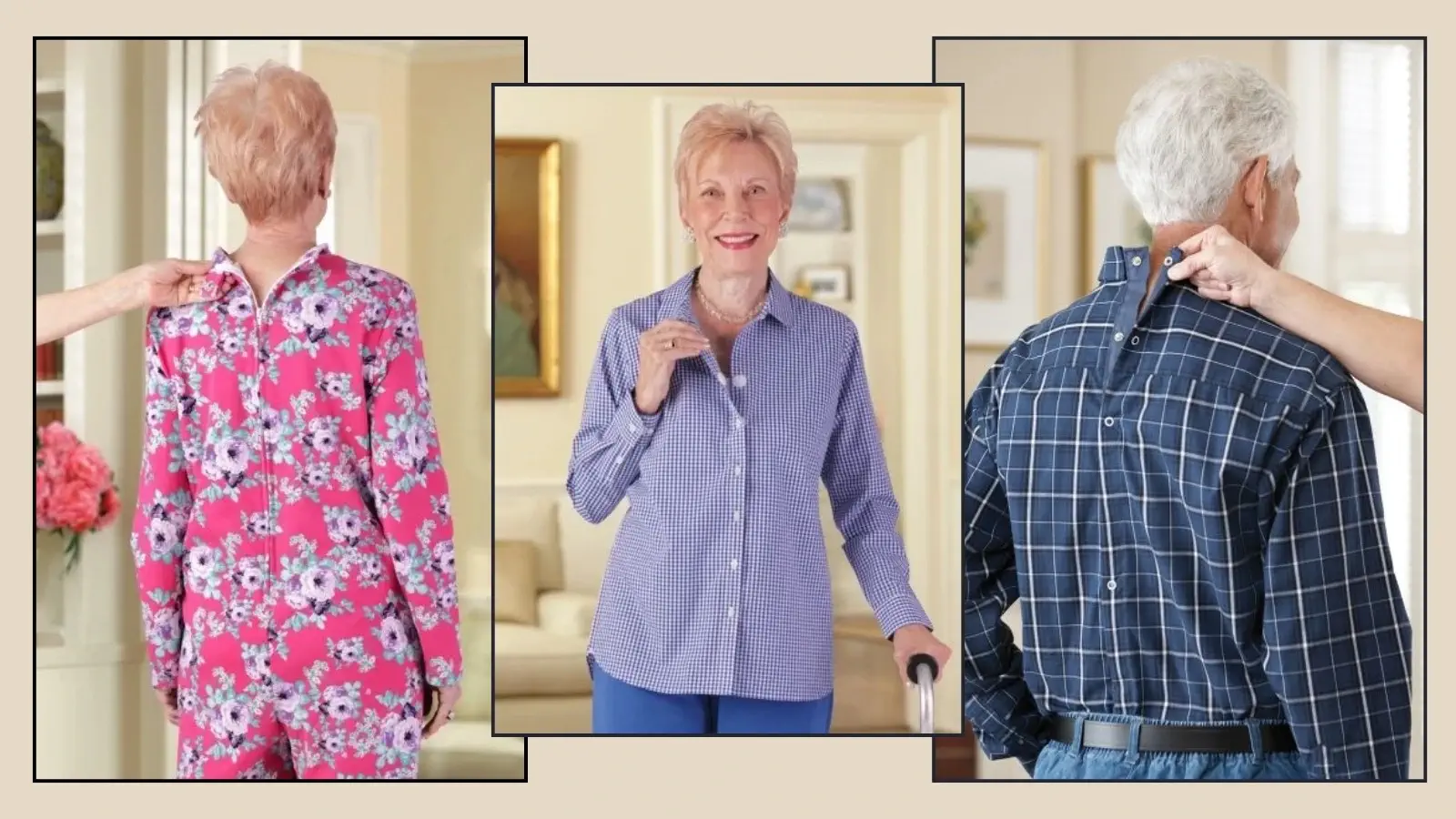
Best Adaptive Clothing for Seniors with Arthritis
Arthritis can make even the simplest daily tasks—like buttoning a shirt or pulling up pants—painful and time-consuming. Adaptive clothing for arthritis patients that thoughtfully designed garments reduce hand strain, increase independence, and help seniors feel comfortable and dignified throughout the day. Best adaptive clothing for seniors with arthritis focuses on easy closures, soft fabrics, and designs that reduce painful movements during dressing. How to dress seniors with arthritis? In this guide from the humanhealthmag website, we explain arthritis-friendly clothing and some clothing solutions for seniors with limited dexterity.
Why Arthritis Makes Dressing Difficult?
Arthritis often causes joint pain, stiffness, swelling, and loss of fine motor control, especially in the fingers, wrists, shoulders, hips, and knees. These symptoms turn simple dressing tasks—like buttoning a shirt or pulling pants over the hips—into exhausting, painful activities.
Seniors may struggle with: gripping small buttons, pulling zippers, raising arms into sleeves, or bending to reach socks and shoes. Over time, these challenges can increase dependence on caregivers and negatively impact emotional well‑being, which is why the Best adaptive clothing for seniors with arthritis is so valuable.
What Is Adaptive Clothing and Why It Matters for Seniors with Arthritis?
As we said arthritis, especially in the hands, wrists, shoulders, and knees, makes gripping, pulling, twisting, or lifting difficult. Things like buttoning a shirt or tying shoelaces may take longer or even become impossible without help. Traditional clothing assumes full dexterity: small buttons, tight necklines, stiff denim, and shoes requiring bending or tying.
Adaptive clothing is apparel specially designed to make dressing easier for activities for elderly with limited mobility, hand pain, or reduced strength, including many seniors with arthritis. These clothing reduces the need for precise finger movement and helps people with limited mobility, pain, or reduced hand dexterity dress more easily.

Instead of small buttons and stiff zippers, easy wear clothing for elderly with arthritis uses features like Velcro, magnetic closures, elastic waists, and open-back or side-opening designs to minimize strain on painful joints. The value of the best adaptive clothing for seniors with arthritis goes beyond just comfort. Well‑chosen adaptive apparel can influence independence, safety, emotional health, and caregiver workload. Key benefits include:
- Easier, faster dressing: Magnetic or Velcro closures and open‑back designs reduce the number of painful movements required.
- Greater independence: Seniors may be able to dress themselves longer, postponing the need for constant assistance.
- Better safety: Reduced tugging and twisting lowers the risk of falls or joint injuries during dressing.
- Enhanced emotional well‑being: Being able to dress attractively and with less frustration helps maintain self‑esteem and a sense of normalcy.
This is why many healthcare facilities and home‑care professionals now recommend integrating the Best adaptive clothing for seniors with arthritis into daily routines early, rather than waiting until dressing becomes a crisis.
Key Features of the Best Adaptive Clothing for Seniors with Arthritis
When looking for the Best adaptive clothing for seniors with arthritis, focus on specific design details rather than just the style or color. Some design elements distinguish the best senior adaptive wear for mobility issues from standard garments, even when they look similar from the outside. Major beneficial features of best adaptive clothing for seniors with arthritis include:
- Easy closures: Velcro strips, magnetic buttons, large snaps, and side zippers that require minimal finger strength
- Open-back or side-opening designs: Allow dressing without lifting arms high or standing to pull garments up.
- Elastic waists and stretch panels: Reduce the need for fine adjustments and make pants easier to pull on.
- Soft, breathable fabrics: Cotton and moisture‑wicking blends reduce skin irritation and accommodate swollen joints.
- Minimal seams and tags: Seamless or low‑seam construction is more comfortable for sensitive skin and painful joints.
- Roomy cuts: Loose but not baggy fits allow free movement without pressure on joints.

Best Adaptive Tops and Shirts for Seniors with Arthritis
Tops are a priority in any wardrobe, and they can be especially difficult for someone who cannot raise their arms easily or handle small fasteners. In any list of the best adaptive clothing for seniors with arthritis, magnetic‑closure shirts and open‑back tops are frequently highlighted because they dramatically cut down painful shoulder and hand movements. Helpful top styles include:
- Magnetic button shirts look like classic button‑downs, but the “buttons” are magnets hidden behind the placket, ideal for weaker hands.
- Open-back tops fasten at the back or shoulders, allowing a caregiver to dress the person from behind with minimal lifting.
- Front‑zip or Velcro‑front shirts have larger zippers or Velcro strips that reduce the need to manipulate tiny hardware.
- Wide neck openings and stretchy fabrics of stretch knit pullovers reduce the effort to get the garment over the head and shoulders.
Best Adaptive Pants and Bottoms for Seniors with Arthritis
Pants can be especially frustrating for seniors with arthritis in the hips, knees, or hands, because they usually require bending, gripping, and pulling. The Best adaptive clothing for seniors with arthritis therefore emphasizes bottoms that open wide and fasten easily. Recommended pant and skirt features include:
- Open‑side pants: Side openings with Velcro or similar closures let caregivers dress the person while seated, reducing the need to stand or balance.
- Elastic waists: Full‑elastic waistbands avoid zippers and buttons entirely and accommodate weight and swelling changes.
- Wrap skirts: Wrap‑style skirts with easy‑touch fasteners are simpler to manage for women with hand arthritis and limited mobility.
- Soft, stretchy materials: Knit or stretch‑woven fabrics glide more easily over joints and are more forgiving for sitting or transferring.
For seniors who spend much of the day seated or in a wheelchair, pants labeled as “open‑side” or “adaptive arthritis pants” are often highlighted among the Best adaptive clothing for seniors with arthritis in professional caregiving resources.
Best Adaptive Footwear and Socks for Seniors with Arthritis
Footwear plays a huge role in both safety and comfort, and arthritis in the feet, ankles, or hands can make traditional shoes very hard to manage. Compression socks or light support socks may also help with swelling, but they can be difficult to put on and should be selected with clinical guidance.

The Best adaptive clothing for seniors with arthritis usually includes specialized slippers and shoes designed for stability and easy access. When building a full outfit of the adaptive clothing for arthritis patients especially for seniors, supportive, easy‑closure shoes are just as important as tops and pants. Useful footwear features include:
- Velcro‑closure shoes: Wide, adjustable straps replace laces and allow for quick fastening without tying.
- Extra‑wide and deep shoes: Provide room for swollen feet or braces, reducing pressure and friction.
- Non‑slip soles: Improve traction and reduce the risk of falls, especially on smooth household floors.
- Easy‑on slippers: Open‑back or wide‑opening designs that slide on with minimal bending are frequently recommended.
Fabrics and Comfort Considerations
Comfort is central for any senior, especially for those living with chronic pain. The Best adaptive clothing for seniors with arthritis typically relies on materials that are gentle on sensitive skin and flexible enough to move with the body. Prefer fabrics that are:
- Soft and breathable: Cotton and cotton‑rich blends help regulate temperature and reduce sweating.
- Moisture‑wicking: These materials keep skin dry, helping to prevent irritation and skin breakdown.
- Stretchy: A small amount of elastane or spandex provides give without feeling tight or restrictive.
At the same time, avoid heavy, scratchy fabrics or tight bands around joints, since these can worsen discomfort. Many brands that focus on the Best adaptive clothing for seniors with arthritis highlight “tagless” and “seam‑lite” designs specifically to reduce skin irritation.
How Caregivers Can Make Dressing Easier for Seniors with Arthritis
Caregivers play a crucial role in choosing and using the Best adaptive clothing for seniors with arthritis. A few practical strategies can significantly reduce stress for both the senior and the helper. Helpful caregiving tips include:
- Lay out clothing in the order it will be put on, from undergarments to outer layers, to streamline the process.
- Dress seated when possible. Sitting on a sturdy chair or bed edge provides stability and reduces fall risks during dressing.
- Use open‑back and side‑opening styles. These allow the caregiver to work from behind or the side, avoiding painful lifting or twisting.
- Allow extra time, because rushing increases anxiety and the chance of accidental joint strain.
Final Thoughts
The Best adaptive clothing for seniors with arthritis is any combination of tops, bottoms, and footwear that reduces pain, simplifies dressing, and still feels like “normal” clothing. By prioritizing easy closures, open‑back or side‑opening designs, soft fabrics, and safe, adjustable shoes, families and caregivers can create a wardrobe that supports independence, safety, and dignity every day. With features like magnetic closures, open-back or side-opening designs, elastic fabrics, and adhesive shoes, you can find the best options.
Don’t just read; also engage and inspire! What did this post teach you, and how will you apply it? Please leave your thoughts in the comments, and let’s learn from each other!

Frequently Asked Questions
Is magnetic clothing safe for seniors?
In most cases, yes; unless you have a pacemaker.
What clothing is easiest to put on with arthritis?
Slip-on, magnetic, and open-sided garments are the best options.
How is adaptive clothing different from normal clothing?
Adaptive clothing is designed to reduce pain and increase independence, while regular clothing does not.
